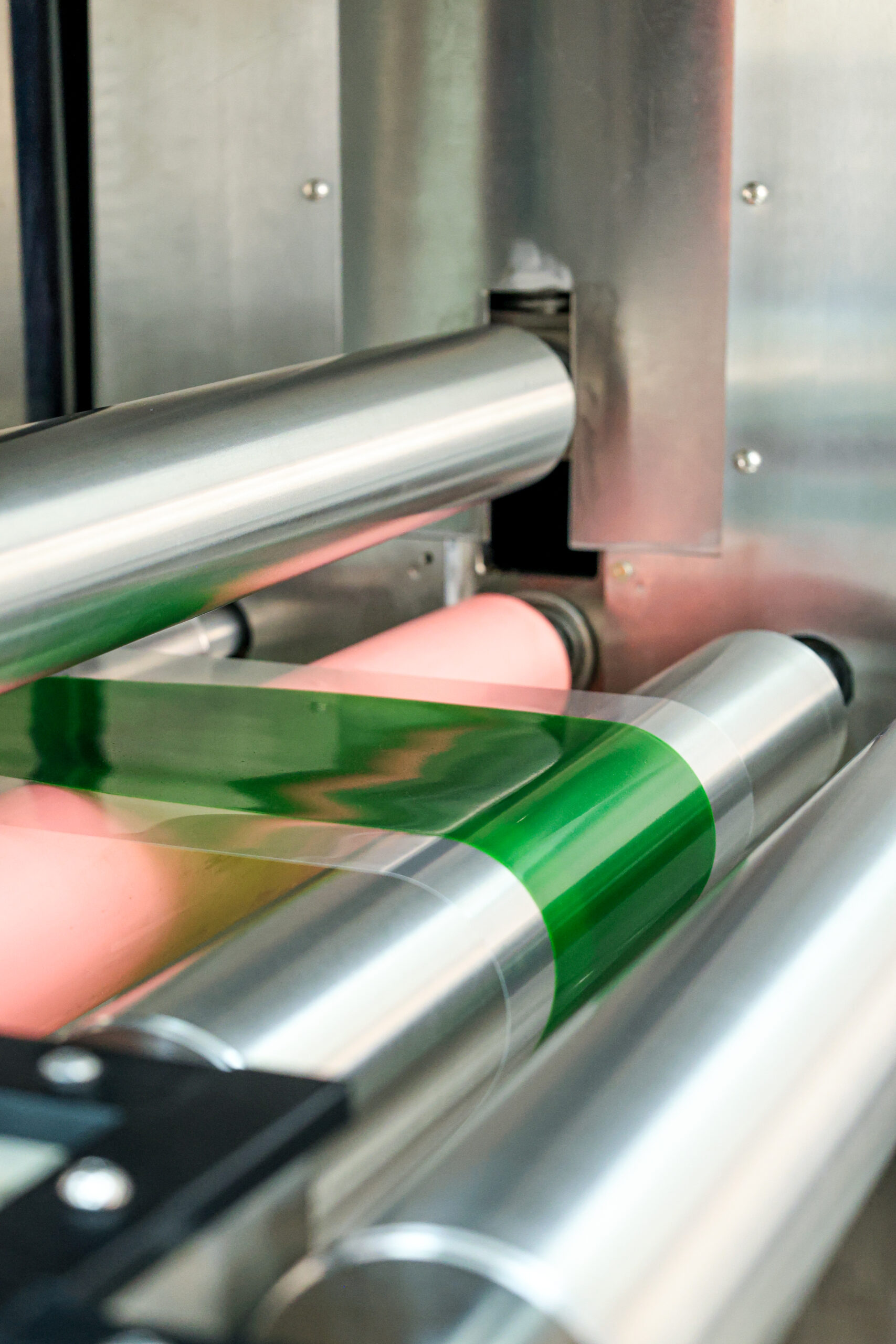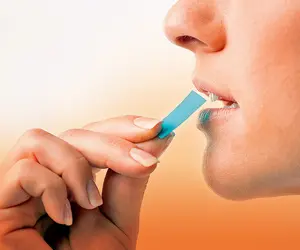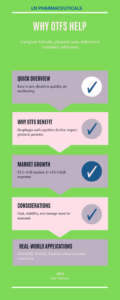
How Oral Thin Films Improve Patient Compliance in Pediatric and Geriatric Care
Patient compliance, or adherence to prescribed medication regimens, is a critical factor in achieving positive health outcomes. However, compliance rates remain suboptimal, particularly among pediatric and geriatric populations, where challenges such as difficulty swallowing pills, complex dosing schedules, and cognitive impairments are common. Oral thin films (OTFs) have emerged as an innovative drug delivery system that addresses these barriers by offering a non-invasive , easy-to-administer , and palatable alternative to traditional dosage forms like tablets and capsules.
Key Advantages of Oral Thin Films for Pediatric and Geriatric Patients

Challenges in Medication Adherence for Pediatric and Geriatric Populations
1. Swallowing Difficulties (Dysphagia)
- Pediatrics: Children under the age of five often lack the coordination and maturity to swallow solid dosage forms safely.
- Geriatrics: Age-related changes in muscle function and neurological conditions (e.g., Parkinson’s disease, stroke) contribute to dysphagia in older adults.
2. Cognitive and Behavioral Barriers
- Pediatrics: Young children may resist taking medications due to unpleasant taste or fear of choking.
- Geriatrics: Cognitive decline (e.g., dementia, Alzheimer’s disease) can lead to missed doses or improper administration.
3. Complex Regimens and Polypharmacy
- Older adults often take multiple medications daily, increasing the likelihood of non-adherence due to confusion or forgetfulness.
4. Caregiver Burden
- Administering medications to children or dependent elderly patients can be time-consuming and stressful for caregivers, especially when dealing with uncooperative patients.
Clinical Evidence Supporting OTFs in Improving Compliance
1. Pediatric Applications
- A 2021 study evaluating CUREfilm OTF demonstrated:
- 90% of pediatric participants rated the film as “very pleasant” or neutral
- No discomfort, pain, or irritation reported
- Improved willingness to take medication consistently
- Real-world example: The use of Zuplenz® (ondansetron oral film) in pediatric oncology settings has shown increased adherence due to its ease of administration and rapid onset of action in managing chemotherapy-induced nausea and vomiting.
2. Geriatric Applications
- In a clinical trial involving elderly patients with Parkinson’s disease , the KYNMOBI® (apomorphine hydrochloride) sublingual film was associated with:
- Higher patient satisfaction scores
- Reduced caregiver burden
- Improved adherence to scheduled dosing due to rapid absorption and ease of use
- Study findings suggest that geriatric patients prefer OTFs over tablets due to their non-invasive nature , rapid dissolution , and lack of choking risk .
Expert Opinions and Market Trends
1. Healthcare Provider Perspectives
- Many clinicians report that switching from tablets to OTFs results in:
- Fewer missed doses
- Improved patient cooperation
- Simplified administration for caregivers
“For patients who cannot swallow pills or have cognitive impairments, oral thin films offer a game-changing solution that enhances both safety and compliance.”
— Dr. Emily Carter, Pediatric Pharmacologist
2. Market Growth and Adoption
- The global oral thin films market is projected to grow at a CAGR of 8–12% through 2034, driven largely by demand in pediatric and geriatric care .
- North America leads adoption , with sublingual films capturing 70.3% of the revenue share in 2024 , reflecting their popularity in managing acute and chronic conditions.
3. Regulatory Support
- Regulatory agencies such as the FDA have supported the development of OTFs through expedited pathways like the 505(b)(2) New Drug Application , which encourages innovation in new dosage forms of existing drugs.
- Products like IGALMI™ (dexmedetomidine) , approved in 2022 for acute agitation in schizophrenia and bipolar disorder, highlight how OTFs are being embraced for use in mental health across age groups.
Case Studies: Real-World Impact of Oral Thin Films
1. Case Study: Use of OTFs in Autism Spectrum Disorder (ASD)
- Children with ASD often exhibit sensory sensitivities and behavioral resistance to conventional medications.
- A pilot program introducing flavored OTFs for antipsychotic medications showed:
- 65% increase in adherence
- Reduced tantrums and resistance during medication time
- Positive feedback from parents and caregivers
2. Case Study: Geriatric Care Facility Implementation
- A nursing home introduced buprenorphine buccal films for pain management in residents with dementia.
- Results included:
- Increased compliance from 55% to 85%
- Fewer instances of missed doses
- Improved overall quality of life and reduced staff workload
Limitations and Considerations
While OTFs offer significant advantages, they also come with some limitations:
Despite these challenges, the benefits of OTFs in improving compliance and reducing caregiver burden make them a valuable option for specific therapeutic applications.

Conclusion
Oral thin films represent a transformative advancement in drug delivery, particularly for pediatric and geriatric patients who face unique challenges with traditional oral dosage forms. By addressing issues such as difficulty swallowing , taste aversion , and complex dosing regimens , OTFs significantly enhance patient compliance , caregiver satisfaction , and clinical outcomes .
As the pharmaceutical industry continues to innovate, we can expect further expansion of OTF applications across a broader range of conditions and age groups, reinforcing their role as a patient-centric solution in modern healthcare.
Recommendations for Healthcare Providers
- Prescribe OTFs for:
- Pediatric patients with swallowing difficulties or sensory sensitivities
- Elderly patients with dysphagia, cognitive impairment, or polypharmacy concerns
- Conditions requiring rapid onset of action or discreet administration
- Use traditional tablets/capsules when:
- High-dose therapy is required
- Cost is a limiting factor
- Long-term treatment with proven adherence exists
